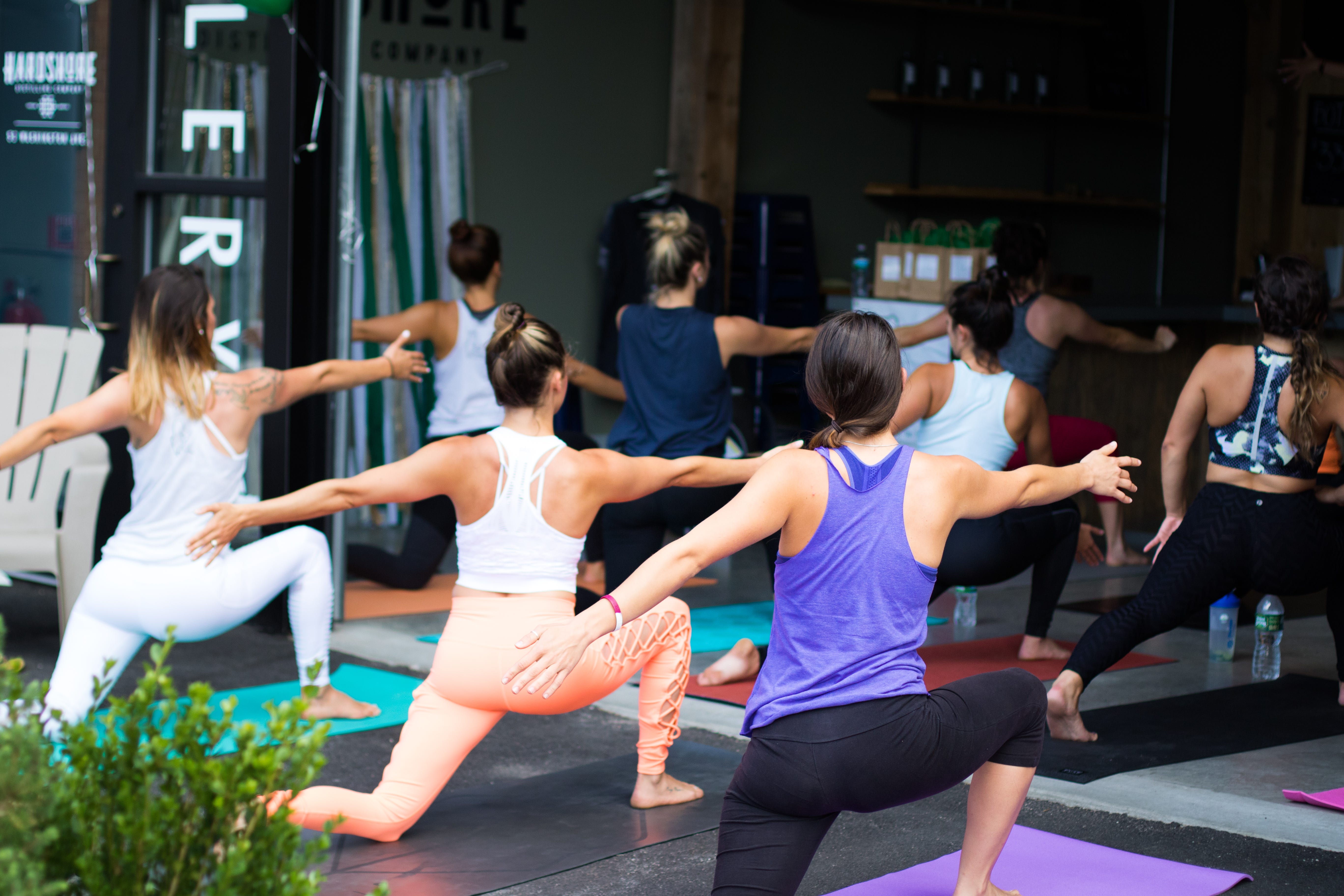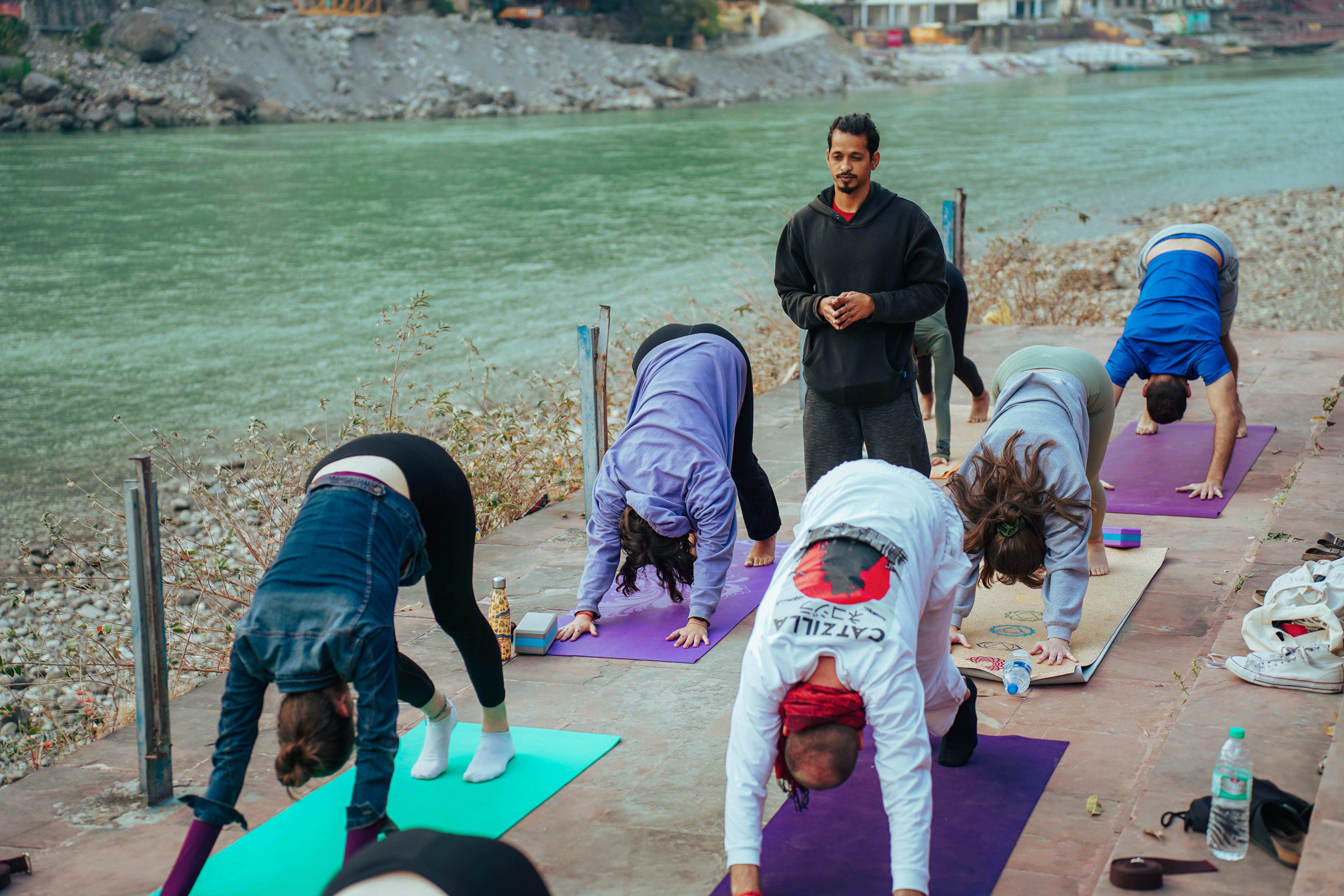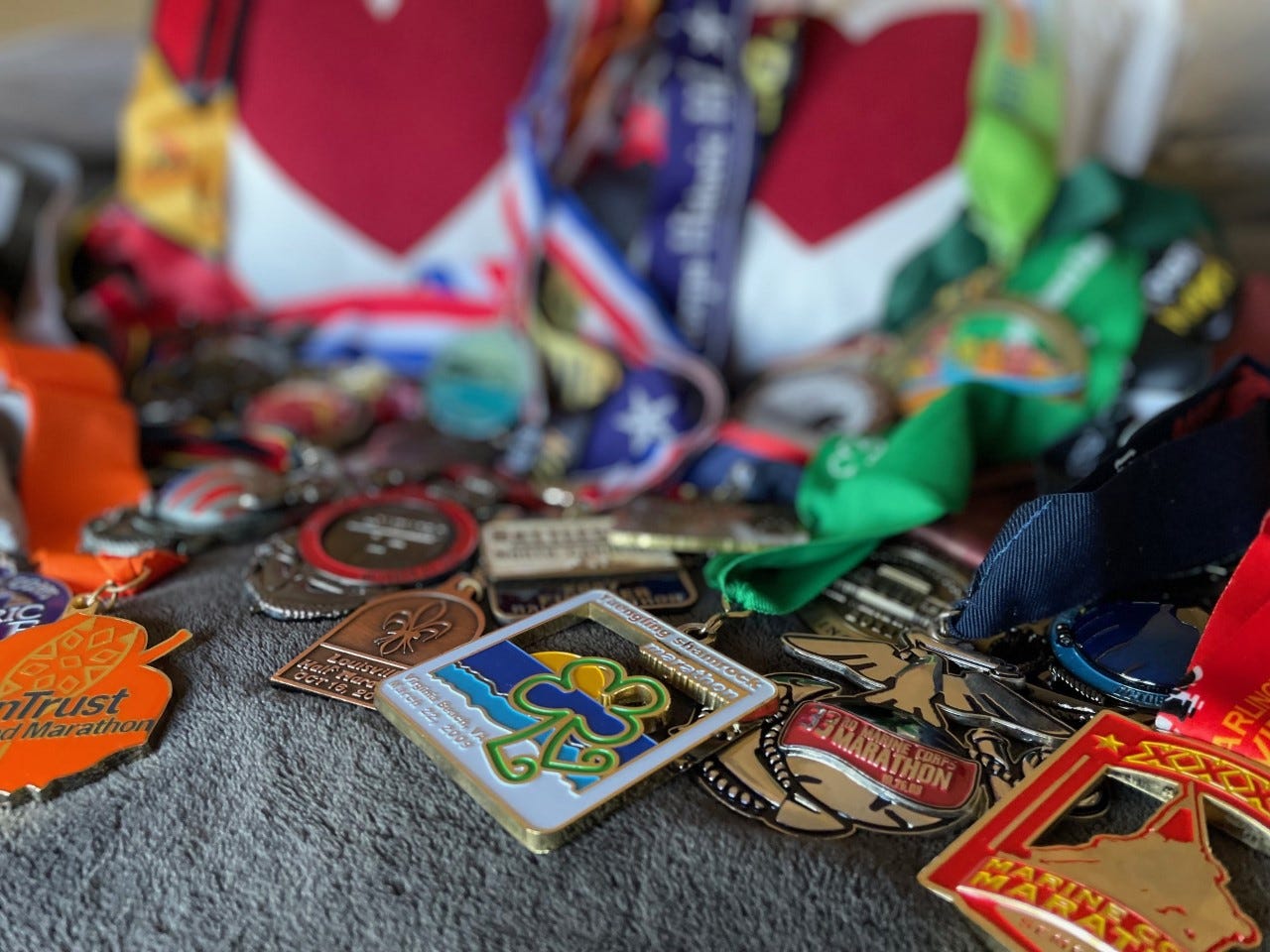A Q&A for India and elsewhere
—
“What is the best place to become a yoga teacher?”
Although you can attend a yoga teacher training (YTT) anywhere in the world, I wanted to go to India (the birthplace of yoga) and, admittedly, pay a lot less than I would have in Europe. On top of that, I didn’t want to bind myself to a certain city in my home country for one or two years. Looking back, I am glad I did a ‘crash course’.
There are yoga schools everywhere in India, such as in Goa or Kerala, but the city of Rishikesh is probably the mecca for Indian yoga schools. That is where I went in March 2023 (read about it here).
I booked a 25-day stay at Drishti Yoga School on the website BookYogaRetreats.com and had to pay about a fourth of the total price before arriving. From Delhi, you can take the plane to Dehradun or the train, bus or cab directly to Rishikesh. This article concentrates on YTTs in Rishikesh but can still be interesting if you’ve decided on another location.
“Do I need several years of yoga experience?”
Short answer: Not at all! In my batch, a few participants had barely done any yoga before and they all had a steep learning curve. I felt like the levels evened out more and more as we approached the end.
Some people who are strong and flexible from other sports will have an easier time performing certain asanas, but you come to the YTT to become better at those exact things! I sometimes surprised myself when being able to perform an asana that had appeared hard at first (sirsasana = headstand, tolasana = ‘scale’ or lifted lotus seat, etc.). Plus, the training is also about breathwork and meditation which most people were inexperienced in.
What really helped me was to know the names of common asanas like the warriors, pigeon, downward-facing dog, cobra, etc. I only knew them in English or German, so had to study the original Sanskrit names.
Don’t stress about acquiring a lot of (or any) yoga theory beforehand. You do the YTT to gain a basic understanding of how yoga originated and how it is intertwined with Indian culture.
Rishikesh has many spiritual bookstores where books cost a lot less than in Europe or North America. Toward the end of the training, I purchased the classical Asana Pranayama Mudra Bandha by the Bihar School of Yoga and The Science of Yoga about Anatomy by Ann Swanson.
“Do I have to become a teacher afterward?”
No! Becoming a yoga teacher is not mandatory. Most students in my batch told me they did the YTT to improve their own yoga practice and immerse themselves in yoga but would perhaps consider teaching it one day.
Another girl and I were the only ones planning to teach in the month after finishing the course, which puts you into cold water but is the best way to apply what you’ve learned. What all YTT students had in common was a passion for yoga or a pronounced interest in discovering more about it. Some had done swimming, gymnastics or martial arts intensely at some point, or had relatives who were yoga teachers.
“Am I physically ready for a YTT?”
You do not need to be able to do hand- or headstand, reach the floor in a standing forward fold, hold your breath for a minute or similar supposed ‘milestones’ that social media might suggest. Each body is different!
However, I would recommend being rather active in the weeks before your arrival. Unlike most other participants, I barely had sore muscles during the YTT (only once, when my shoulders and arms hurt for three days). That might be because I did yoga daily before coming to the training and did other light exercises like walking and hiking regularly. That being said, you can also come to the training without being in great shape.
“In what state of mind should I arrive?”
Firstly, a YTT is not a yoga retreat. Don’t expect luxurious rooms or restaurant food and don’t think you will have a chill time. There will be relaxing moments and it will probably be a lot of fun, but having yoga practice and theory the whole day is challenging!
Secondly, be ready to fall sick for at least a day. There are lots of things your body needs to adapt to, and the schedule is tightly packed. All you can do is accept it when it happens, take a rest when you feel like it and bring, buy or ask other students for medicine.
Be kind to your body when on your period as well. You might be surprised how yoga can relieve your pain (even inversions! There is no medical evidence against it), but if it doesn’t, allow yourself to sleep — or sit in the back and simply listen to classes. Being kind to your body is part of the yogic principles (ahimsa = non-violence towards others and yourself).
Thirdly, try to be open-minded when it comes to spirituality, religion and practices that can appear strange, like breathing through one nostril or cleansing your eyes with rose water. You will have time to digest and reflect on everything you heard and did after your stay.
“What should I avoid doing?”
You will regret having to work remotely during your YTT — so plan wisely! I was working on a job application which meant spending my lunch breaks and evenings in front of my laptop for almost two weeks. It was doable, but quite draining to keep up with all the YTT classes at the same time.
Also, avoid social stress such as fixing many calls with friends and family. You might just feel like napping during your break or getting to know fellow YTT students — and your close ones back home can get longer updates from you once your training is over. My roommate deleted her WhatsApp during the YTT and I do not have Instagram so we felt like we had more time to fully experience our time in Rishikesh.
“What do I need to pack for Rishikesh?”
- I brought various yoga leggings, pants, bras, tank tops and long sports shirts. You can wash or at least pay for a laundry service, but you won’t have much time during the week. Looking back, I didn’t sweat as much as expected and would have been fine with two to three yoga outfits.
- As a woman, you should rather go outside wearing wide clothes that cover your shoulders and legs. Although you can wear shorts and a yoga bra in school, Indian women typically cover up outside. Doing so prevents you from being stared at, and is considered more respectful.
- Warm clothes can be a lifesaver. Yes, it is India, but the mornings and evenings can be pretty chilly. We had unexpected rain and thunder in March which meant a drop from almost 30°C (86°F) to just above 20°C.
- Some medications for the flu or food poisoning are practical, just like soap for your room (but you can buy those in India too).
- If you are not lucky enough to be a man or stop your period by hormonal contraception, bring period products like sanitary pads, tampons or a menstrual cup. I used the latter and was very happy with it. Indians use water instead of toilet paper and there is often no proper garbage disposal — so you better have washable and reusable products.
- Pack your own yoga mat if you like. I was fine with using the ones provided by my yoga school, although one side was always slightly rolled in. Another easy option is to buy one in Rishikesh.
- You might want to have a cloth and cleaning spray to wipe your room and your yoga mat from time to time if you care a lot about hygiene.
- Don’t forget a diary or journal to write down what you’ve learned, observed, etc. — and of course a notebook or two that you will love to take notes in. Perhaps have colored pencils to highlight your notes and the script you get from your school.
- In Rishikesh, you can buy an Indian SIM card. The wifi in your accommodation might not be very reliable!
© Annika Erika for Medium 2023
Read unlimited Medium articles by following my referral link. More from me:
7 min readMay 10, 2021










